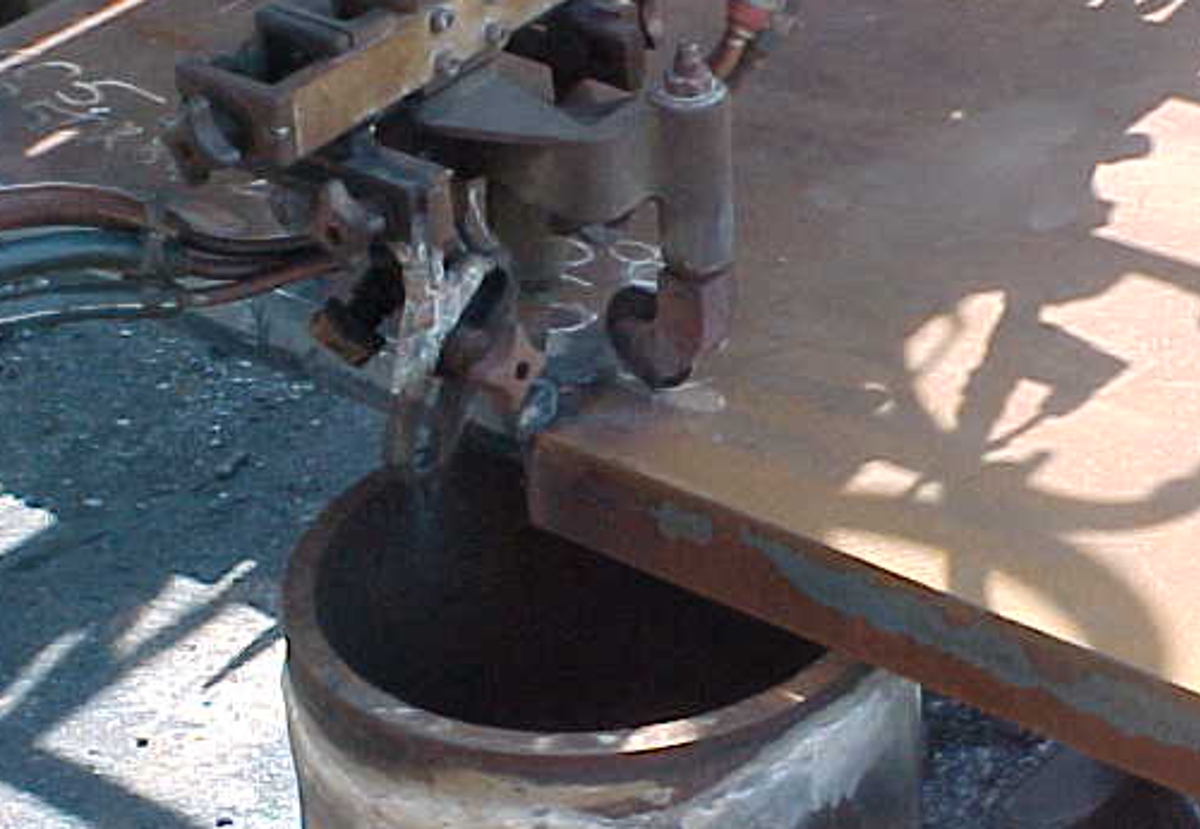Near-miss involving oxy-acetylene cutting of plate
- Safety Flash
- Published on 1 April 2003
- Generated on 4 July 2025
- IMCA SF 03/03
- 2 minute read
Jump to:
A Member has reported a serious incident where a plate was being supported on a small length of tubular, which was mounted vertically.
What happened?
The tube was sealed at the bottom, but open to the atmosphere at the top end. The plate was about to be cut using an oxy-acetylene cutting torch mounted on a jig. The torch had been positioned at the side of the plate and was energised by the gases, in preparation for being ignited. This arrangement is shown below.

Gas was allowed, inadvertently, to flow freely into the open pipe. When the spark was struck to ignite the torch, entrained gas at the top of the open pipe alighted, causing a small explosion which resulted in a burn to the operator’s hand.
The member involved has noted that positioning a plate over a support which does not allow free dispersion of volatile gases ‘is not good practice’. Normal good practice is to support the work piece on supports that specifically avoid the build-up of a volatile mixture by, for example, the use of open trestles with sacrificial lugs.
Actions taken
It has reminded all those involved in metal fitting activities that they should assess the arrangements they have in place for cutting metal, to check that volatile gases are allowed to freely disperse.
The Member concerned has instructed its personnel to replace any arrangements that do not allow this before further cutting operations are conducted.
IMCA Safety Flashes summarise key safety matters and incidents, allowing lessons to be more easily learnt for the benefit of the entire offshore industry.
The effectiveness of the IMCA Safety Flash system depends on the industry sharing information and so avoiding repeat incidents. Incidents are classified according to IOGP's Life Saving Rules.
All information is anonymised or sanitised, as appropriate, and warnings for graphic content included where possible.
IMCA makes every effort to ensure both the accuracy and reliability of the information shared, but is not be liable for any guidance and/or recommendation and/or statement herein contained.
The information contained in this document does not fulfil or replace any individual's or Member's legal, regulatory or other duties or obligations in respect of their operations. Individuals and Members remain solely responsible for the safe, lawful and proper conduct of their operations.
Share your safety incidents with IMCA online. Sign-up to receive Safety Flashes straight to your email.